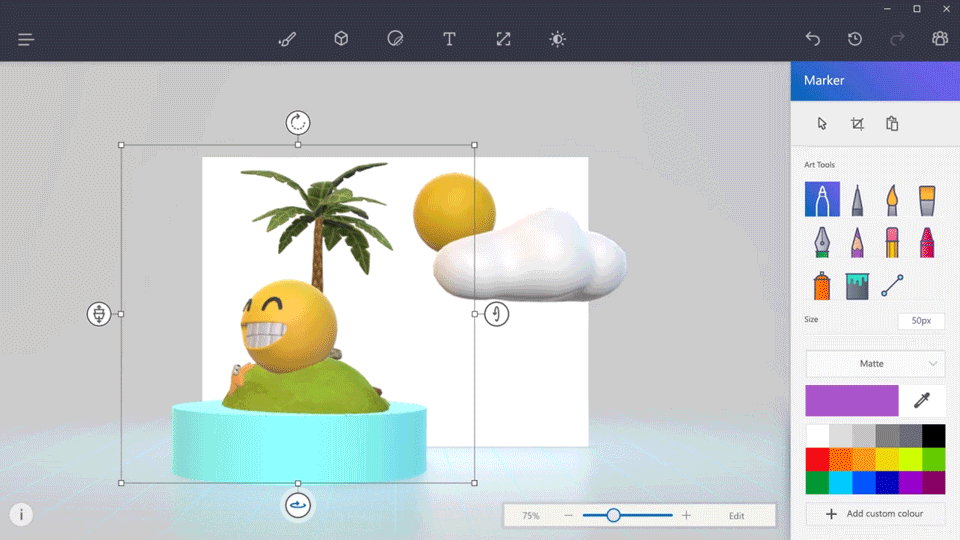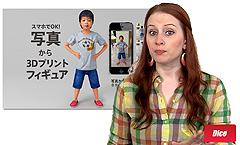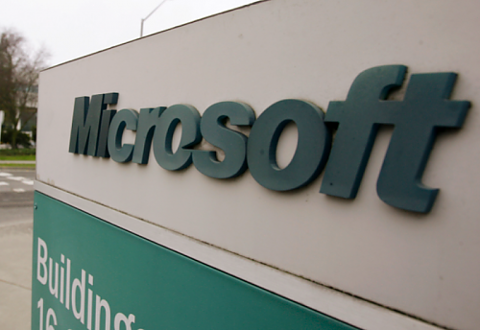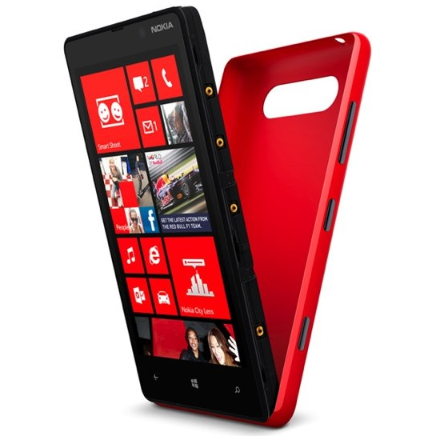
At an event this week dedicated to new creativity tools and Surface hardware, Microsoft made some interesting features available to (and for) 3D via its revamped Paint app. You can 3D print your renders, and transform 2D renderings into 3D creations, or even draw objects visible in the real world via the HoloLens, Microsoft's augmented-reality headset. But is Microsoft
jumping the shark with all these 3D add-ons? We can look back to the
introduction of Windows 8.1 for an answer on that. With that version of its operating system, Microsoft introduced plug-and-play
support for 3D printers. It was a newer version of legacy software introduced
with Windows 95, with the idea that users could plug any printer, joystick or other peripheral into a Windows PC and not have to download drivers or other fussy software (or manage it moving forward). While support for hardware is one thing, exploiting a growing industry is something entirely different. And a
ll indicators suggest the 3D printing industry is in steep decline; for
at least the past year, pundits have pointed out that 3D printing isn’t catching on for use in homes. Yet that's exactly Microsoft's target market for all these 3D features. During its event, Microsoft noted you could create 3D renders of, well,
stuff and print it using the 3D printer you likely don’t have in your home. Even Minecraft trinkets!

That doesn't mean 3D printers are doomed to the dustbin of history. For example, MakerBot’s
Replicator+ is a new offering from the company that pioneered cheaper 3D printing enthusiasts, but comes at an awkward time. Just ahead of its launch, the company noted that 3D printing is ‘
just not there yet’ as it relates to in-home use. Microsoft is trying to make 3D printing defensible, and doing a fairly good job. Its new Paint tools for creating 3D objects are pretty simple to use, and remove fussy toolbars and other prosumer tools that most of us just don’t care about. There’s even a method for taking a 360-degree reverse-panorama (call it scanning, or imaging) of an object and letting Windows render it as a 3D object. [caption id="attachment_137934" align="aligncenter" width="1040"]

Image credit: winbeta.org[/caption] (While details are sketchy, that feature seems to require a Windows Phone, which has less of a footprint in the wild than 3D printers.) All told, Microsoft seems to offer a nice, holistic approach to creating, managing and printing in 3D. Still, it’s hard to think that consumers will rush out to buy a 3D printer – and those who do will probably end up plunging down the rabbit’s hole of endless filament purchases and breaking parts that require maintenance. Microsoft may have sparked interest in 3D printing, but there’s little reason to think it will somehow make printing objects standard-issue in your home. Between tying it into two markets in a death spiral and failing to offer a 3D printer as an add-on option for a Surface device, it’s difficult to think of this initiative as more than a blip on the Windows radar.
 At an event this week dedicated to new creativity tools and Surface hardware, Microsoft made some interesting features available to (and for) 3D via its revamped Paint app. You can 3D print your renders, and transform 2D renderings into 3D creations, or even draw objects visible in the real world via the HoloLens, Microsoft's augmented-reality headset. But is Microsoft jumping the shark with all these 3D add-ons? We can look back to the introduction of Windows 8.1 for an answer on that. With that version of its operating system, Microsoft introduced plug-and-play support for 3D printers. It was a newer version of legacy software introduced with Windows 95, with the idea that users could plug any printer, joystick or other peripheral into a Windows PC and not have to download drivers or other fussy software (or manage it moving forward). While support for hardware is one thing, exploiting a growing industry is something entirely different. And all indicators suggest the 3D printing industry is in steep decline; for at least the past year, pundits have pointed out that 3D printing isn’t catching on for use in homes. Yet that's exactly Microsoft's target market for all these 3D features. During its event, Microsoft noted you could create 3D renders of, well, stuff and print it using the 3D printer you likely don’t have in your home. Even Minecraft trinkets!
At an event this week dedicated to new creativity tools and Surface hardware, Microsoft made some interesting features available to (and for) 3D via its revamped Paint app. You can 3D print your renders, and transform 2D renderings into 3D creations, or even draw objects visible in the real world via the HoloLens, Microsoft's augmented-reality headset. But is Microsoft jumping the shark with all these 3D add-ons? We can look back to the introduction of Windows 8.1 for an answer on that. With that version of its operating system, Microsoft introduced plug-and-play support for 3D printers. It was a newer version of legacy software introduced with Windows 95, with the idea that users could plug any printer, joystick or other peripheral into a Windows PC and not have to download drivers or other fussy software (or manage it moving forward). While support for hardware is one thing, exploiting a growing industry is something entirely different. And all indicators suggest the 3D printing industry is in steep decline; for at least the past year, pundits have pointed out that 3D printing isn’t catching on for use in homes. Yet that's exactly Microsoft's target market for all these 3D features. During its event, Microsoft noted you could create 3D renders of, well, stuff and print it using the 3D printer you likely don’t have in your home. Even Minecraft trinkets!  That doesn't mean 3D printers are doomed to the dustbin of history. For example, MakerBot’s Replicator+ is a new offering from the company that pioneered cheaper 3D printing enthusiasts, but comes at an awkward time. Just ahead of its launch, the company noted that 3D printing is ‘just not there yet’ as it relates to in-home use. Microsoft is trying to make 3D printing defensible, and doing a fairly good job. Its new Paint tools for creating 3D objects are pretty simple to use, and remove fussy toolbars and other prosumer tools that most of us just don’t care about. There’s even a method for taking a 360-degree reverse-panorama (call it scanning, or imaging) of an object and letting Windows render it as a 3D object. [caption id="attachment_137934" align="aligncenter" width="1040"]
That doesn't mean 3D printers are doomed to the dustbin of history. For example, MakerBot’s Replicator+ is a new offering from the company that pioneered cheaper 3D printing enthusiasts, but comes at an awkward time. Just ahead of its launch, the company noted that 3D printing is ‘just not there yet’ as it relates to in-home use. Microsoft is trying to make 3D printing defensible, and doing a fairly good job. Its new Paint tools for creating 3D objects are pretty simple to use, and remove fussy toolbars and other prosumer tools that most of us just don’t care about. There’s even a method for taking a 360-degree reverse-panorama (call it scanning, or imaging) of an object and letting Windows render it as a 3D object. [caption id="attachment_137934" align="aligncenter" width="1040"]  Image credit: winbeta.org[/caption] (While details are sketchy, that feature seems to require a Windows Phone, which has less of a footprint in the wild than 3D printers.) All told, Microsoft seems to offer a nice, holistic approach to creating, managing and printing in 3D. Still, it’s hard to think that consumers will rush out to buy a 3D printer – and those who do will probably end up plunging down the rabbit’s hole of endless filament purchases and breaking parts that require maintenance. Microsoft may have sparked interest in 3D printing, but there’s little reason to think it will somehow make printing objects standard-issue in your home. Between tying it into two markets in a death spiral and failing to offer a 3D printer as an add-on option for a Surface device, it’s difficult to think of this initiative as more than a blip on the Windows radar.
Image credit: winbeta.org[/caption] (While details are sketchy, that feature seems to require a Windows Phone, which has less of a footprint in the wild than 3D printers.) All told, Microsoft seems to offer a nice, holistic approach to creating, managing and printing in 3D. Still, it’s hard to think that consumers will rush out to buy a 3D printer – and those who do will probably end up plunging down the rabbit’s hole of endless filament purchases and breaking parts that require maintenance. Microsoft may have sparked interest in 3D printing, but there’s little reason to think it will somehow make printing objects standard-issue in your home. Between tying it into two markets in a death spiral and failing to offer a 3D printer as an add-on option for a Surface device, it’s difficult to think of this initiative as more than a blip on the Windows radar. 


